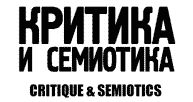ARKHANGELSK SPATIAL ORGANIZATION IN THE PAST AND TODAY: COMPARATIVE STUDY
DOI: 10.23951/2312-7899-2018-3-145-154
The paper deals with Arkhangelsk town-planning features in the historical and cultural perspective from the end of the 16th to the beginning of the 21st century. The Pomorian city is represented as the condensed essence of a holistic ideological and semantic program which peculiar to the Russian medieval city. Arkhangelsk is developing in the tideway of the general Russian architectural tradition and of its creative interpretation of various styles techniques and motifs: from baroque to modern. The primary focus is on the eclecticism and art nouveau periods. In the eclecticism era the Novgorod, Moscow, Yaroslavl and especially northern folk architecture traditions became a significant basis for them. At the beginning of the 20th century the eclecticism yielded precedence to the Arkhangelsk art nouveau, manifested here in the pre-revolutionary period. It was focused mainly on a strictly rationalistic and functional direction. The trading houses, built according to designs of S. A. Pets with their distinctive architecture and the Belyaevsky’s wooden house with the filled with decor street façade, that combines carved paneling and open log became exceptions. The techniques of Russian wooden architecture with the forms of the art nouveau and the traditional Scandinavian architecture surprisingly combined here. All presented art styles that followed the tastes of the time remained deeply national. At the beginning of the 20th century, interest in innovative phenomena of Western European art coexisted with a deep interest in the artistic culture of the Russian people, its traditions. “In Russia, a fertile passion for its past woke up” (I. Evdokimov). In the 20th – 21st centuries, these traditions are being interrupted, which will lead to the disappearance of the historical city face.
Keywords: Russia, Pomorye, Arkhangelsk, ‘grad’-city, monastery, traders’ market, architecture, art styles
References:
Belinsky 1859 – Belinsky V. G. Letter from armless to legless disabled person. Сollected Works. Vol. III. Moscow, 1859. P. 261–270. In Russian.
de Bruijn 1873 – Journey through Muscovy by Cornelis de Bruijn. Transl. into Russian. Moscow, 1873.
Genon 2003 – Genon R. Сollected Works. Transl. into Russian.Moscow, 2003.
Kazakov 1973 – Kazakov Yu. P. Northern Diary. Moscow, 1973. In Russian.
Kolpakova 1975 – Kolpakova N. P. At the Golden Springs: Notes of the Folklorist. Leningrad, 1975. In Russian.
Likhachov 1984 – Likhachov D. S. The Land of Epics: A Word about Arkhangelsk. Pravda Severa [Northern Truth]. 1984. March 25. P. 4. In Russian.
Sauvage 1841 – Mémoires de voïage, qu’a faict Jehan Sauvage de Dieppe en Russie. Transl. into Russian. Russian Bulletin. 1841. Vol. 1. 1. P. 223–230.
Vanslov 2007 – Vanslov V. V. Ambivalence of the artistic image of the city in art. Observatory of Culture. 2007. 6. P. 52–55. In Russian.
Issue: 3, 2018
Series of issue: Issue 3
Rubric: ARTICLES
Pages: 145 — 154
Downloads: 856










